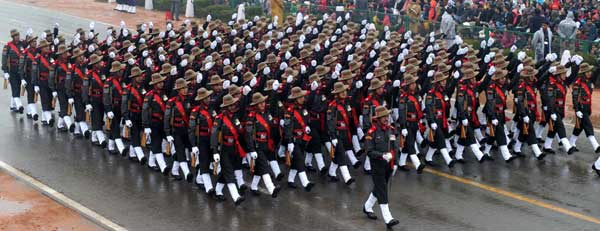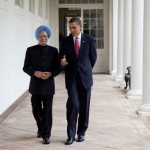
In military circles, Clausewitz aphorism; “war is merely the continuation of policy by other means”[1] is generally accepted as a truism. However, the situation is more contentious amongst politico-military hierarchy when accepting the basic premise of the Samuel Huntington model of civil-military relations. This premise states that military professionals have a monopoly on the appropriate application of violence to protect a country’s interests, and that once policies (political objectives in war) are set, the military professionals should be left alone to achieve those objectives without meddling from civilian authorities[2]. When juxtaposed, these two ideas— that war is continuation of policy but military officers should be given autonomy once the goals of a conflict are set— are seemingly contradictory.
The recent standoff in Eastern Ladakh brought to fore this contradiction to the consternation of operational commanders where in sub sub tactical decision of opening fire became strategically important. One had read and written about the strategic junior leader and the sub-tactical general[3] but this was epiphany of a new construct a sub-tactical politico-military decision maker. Indian Army tends to view military operations as a more apolitical undertaking than it should. The military should stop using the term and concept of “end state[4]” at the strategic and operational levels. Conflicts don’t end temporally, and looking at a very finite moment to define either the focus of the operation or its success is turning out to be short sighted. We should accept the fact that our efforts are only able to set the conditions for an environment that is more acceptable to the interests of India and cannot create a deterministic environment.
In addition, it should understand that any problem addressed militarily will most likely not be completely solved but will require some sort of maintenance (either by the military or some other instrument of CNP) to ensure resources are not wasted. The theater commander’s plan is the primary means through which the Indian Armed Forces achieve or protect national interests. The campaign plan details a range of steady state military activities (capability development, military engagement, deterrence, coercion etc.) that when coordinated with activities from the other instruments of national power should avert major conflict. However, because the geo-political environment in the region is complex, there are times that despite the best efforts, the nation fails to protect and further national interests as it has panned out since 05 May 2020[5]. Military instrument of CNP is called upon to create a more favorable environment and during any increased use of military power, the goal is to reach the position wherein other elements of CNP are able to protect and further our interests. Joint strategy and the interagency cooperation will require updating if they are to reflect the reality of the strategic and operational environments.
For us all planning is regressive and starts with the END STATE, however, for all concerned, continued use of this expression is confusing and creates a mental paradox that does not reflect reality. Strategic articulation should ban the term “end state” because the situation never terminates, it transitions to another state. For example, although Operation SNOW LEOPARD[6] may end, Indian responses on LAC would have gone through a paradigm shift in all vectors of CNP. Thinking in terms of changeover of ‘Lead Vector’ and ‘Led Vector’ will focus current and future commanders on a better understanding on how to transition operations instead of how to terminate operations and leave the transition for others like politicians and diplomats to consider.
When General Tommy Franks, briefed President George W. Bush on the operational approach for Operation Iraqi Freedom, he noted two things that would signal the end state of the operation— “weapons of mass destruction removal” and “regime change.”[7] General Frank’s briefing slide did not annotate whether the end state shown was military or strategic. Suffice it to say, it was neither. Depending on one’s view of the operation, the two signals were either intermediate military objectives or a military end state. In other words, they were specific, desired results that should have only facilitated a much more robust political vision. In fact, if all military operations are only a continuation of policy, then there is no such thing as a military end state. As such, if we deleted the idea of a military end state, it would advance and inculcate the concept that military action at the operational level should directly support political vision, and, more importantly, it would send a message to civilian authorities that the use of military power is not an end unto itself.
The propensity for annotating a final end state stems from tactical military planning culture. In tactical planning, the end state is usually an achievable and measurable objective. Definitive tactical objectives like capture a feature or destroy the enemy’s tanks engender a synoptic approach to developing ways to achieve the objective. However, often at the strategic level of war, such definitive objectives are allusive. For example, the political vision and hence the enduring state desired by the nation tends to change with the development of ongoing situations similar to what has been happening on LAC. In the prevailing situation, the situation evolves based on factors such as the international community’s involvement, public opinion, the focus of and on the two belligerents and regional overflow of the problem like sudden actions by Nepal[8].
These situations necessitate flexibility from civilian leadership that is completely incongruent with the culture of military planners who want to plan to an end state. To resolve this problem, we should focus on having the military develop and provide options instead of courses of action at the theatre commander level. Strategic options will provide an expected result emanating from the military action taken, thus leaving a wide array of results open for civilian leadership to consider, courses of action are normally developed based on a predetermined expected result. Strategic options are not courses of action. Strategic options assist the senior leaders in the use of military force in the context of all instruments of national power. Likewise, strategic options are not accomplished as an afterthought during planning, but rather are addressed as a precursor to planning efforts.
Communication of a strategic option must be in a format and use language that is easily understood by civilian leaders and policymakers. Though there is no standard for a strategic option, each strategic option should contain the following elements:
- Conditions and assumptions upon which the option is based.
- Desired transition conditions.
- A description of the concept with emphasis on the use of military actions in the context of the use of other instruments of national power.
The strategic and operational risks entailed in this option
Military leaders must also be prepared to present options to adapt the strategy and potentially the policy to react to the changing environment. This requirement for change might be due to unforeseen successes, failures, or other circumstances. It is especially important for the commander and staffs to look at the holistic national strategy to determine the need for and the impact of changes to the military approach to adapt to the circumstances. A list of desired leader attributes must include things such as recognize change and lead transitions, anticipate and adapt to surprise and uncertainty, and understand the environment and the effect of all instruments of national power. We need to create a culture that thrives on such attributes and facilitates critical communications between civilian and military leadership. It is time for the armed forces to embrace the dynamic reality of the political employment of the use of force and train and plan for the uncertainty of the strategic environment in order to achieve those attributes so definitively outlined by the CDS[9] (in times to come).
Endnotes
[1] https://economictimes.indiatimes.com/news/defence/transformation-of-indian-armed-forces-a-prerequisite-to-stay-relevant-bipin-rawat/articleshow/81333967.cms?from=mdr accessed on 21 Mar 2021.
[1] Jasmin Čajić, The Relevance of Clausewitz’s Theory of War to Contemporary Conflict Resolution , Connections , Vol. 15, No. 1 (Winter 2016), Partnership for Peace Consortium of Defense Academies and Security Studies Institutes, pp 72-78.
[2] Donald S. Travis, Saving Samuel Huntington and the Need for Pragmatic Civil–Military Relations,Armed Forces and Soceity Journal, Volume 43 Issue 3, July 2017, https://journals.sagepub.com/toc/afs/43/3 accessed on 10 Feb 2021.
[3] Col Harsh Vardhan Singh, Sub Tactical General, https://www.claws.in/sub-tactical-general/ accessed on 04 Feb 2021.
[4] Lt Gen VK Kapoor, PVSM (Retd) Operational Art in the Indian Context
https://usiofindia.org/publication/usi-journal/operational-art-in-the-indian-context/ accessed on 01 Feb 2021.
[5] https://www.business-standard.com/article/defence/after-changing-galwan-claim-line-thrice-pla-now-claims-the-entire-valley-120052600077_1.html accessed on 03 Feb 2021.
[6] Gaurav C Sawant,Op Snow Leopard: Inside story of how Army reclaimed heights in eastern Ladakh://www.indiatoday.in/india/story/snow-leopard-inside-story-army-reclaimed-heights-ladakh-exclusive, accessed on 05 Feb 2021.
[7] William J. Davis, Jr ,The End of End State— Strategic Planning Process for the 21st Century, pg 19, https://thesimonscenter.org/wp-content/uploads/2015/11/IAJ-6-4-Fall-2015-16-23.pdf accessed on 21 Feb 2021.
[8] Kallol Bhattacharjee, Nepal’s new political map claims India’s territories , https://www.thehindu.com/news/national/nepals-new-political-map-claims-indias-territories/article31632033.ece accessed on 12 Feb 2021.
[9] https://economictimes.indiatimes.com/news/defence/transformation-of-indian-armed-forces-a-prerequisite-to-stay-relevant-bipin-rawat/articleshow/81333967.cms?from=mdr accessed on 21 Mar 2021.
Courtesy: https://www.claws.in/looking-for-chimera-favourable-end-state/




